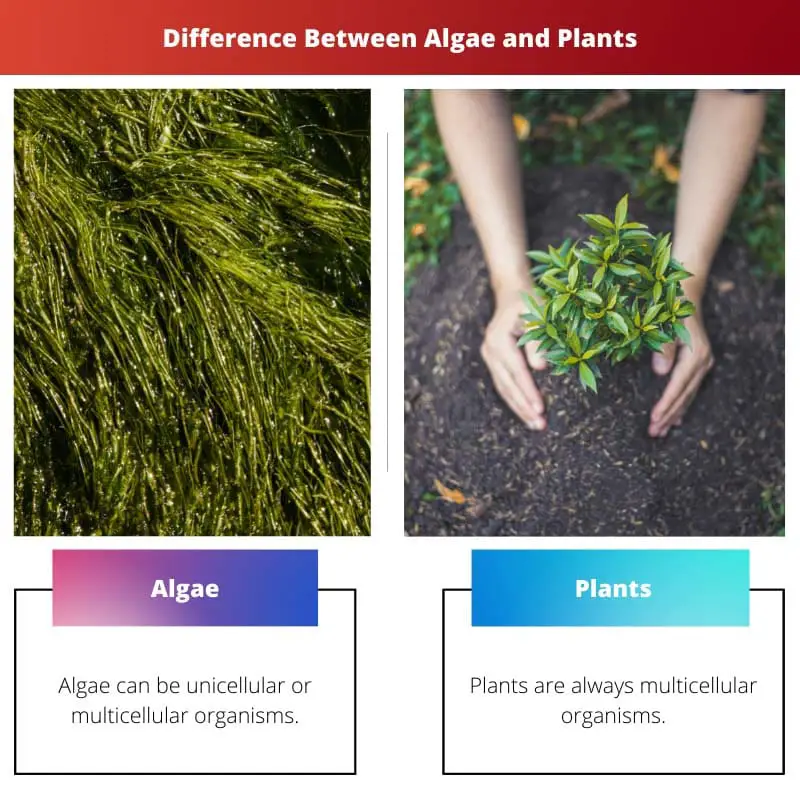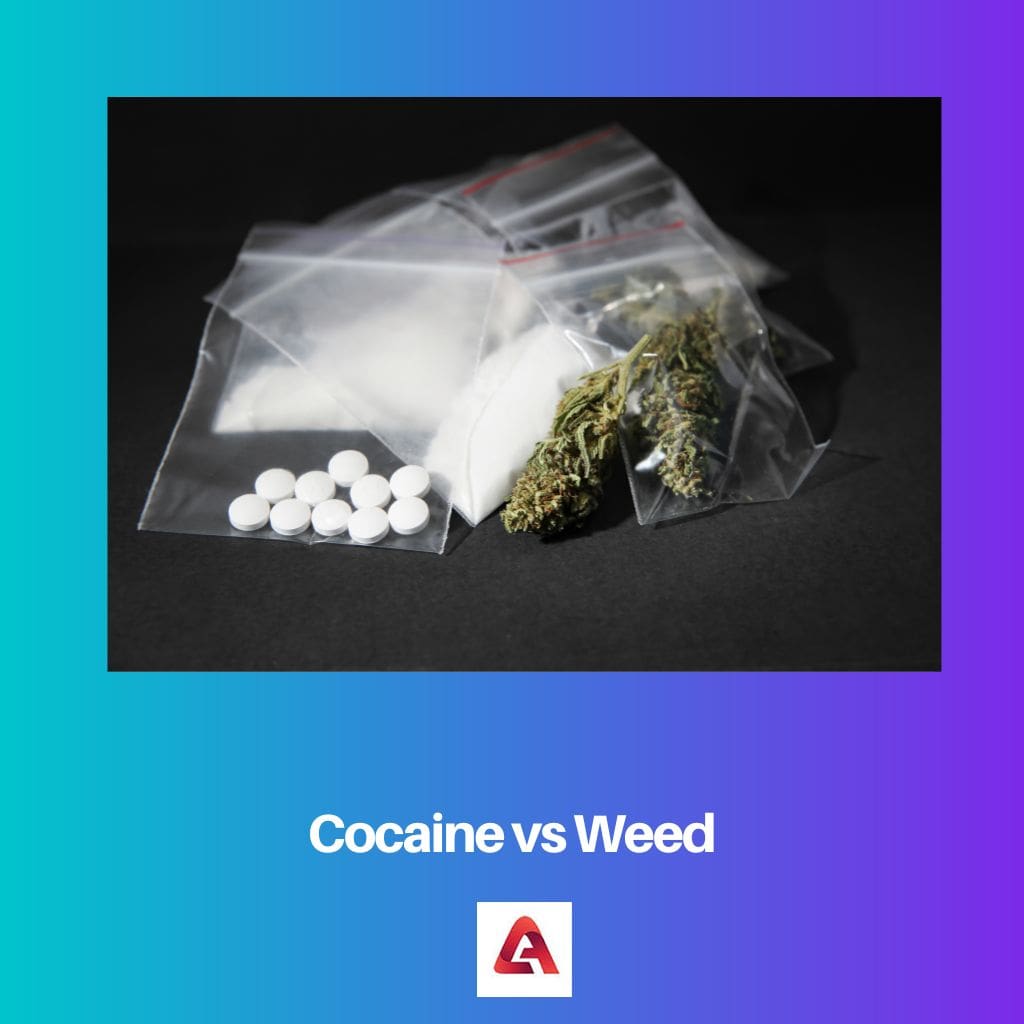Algae, unicellular or simple multicellular organisms, are primarily aquatic and lack true roots, stems, or leaves. They utilize photosynthesis for energy production, contributing significantly to oxygen production and serving as crucial primary producers in aquatic ecosystems. In contrast, plants are multicellular organisms with specialized tissues, including roots, stems, and leaves, adapted for terrestrial environments, demonstrating a higher degree of complexity in structure and function.
Key Takeaways
- Algae are simple, non-flowering aquatic organisms that can be unicellular or multicellular, while plants are multicellular, photosynthetic organisms with roots, stems, and leaves.
- Algae do not have specialized tissues or organs like plants, while plants have specialized structures for transporting water and nutrients.
- Algae are found in various habitats, while plants are mostly terrestrial.
Algae vs Plants
The difference between algae and plants is that while algae can be unicellular or multicellular organisms, plants are always multicellular. Algae may be found as organisms with only one cell or multicellular beings living in colonies.
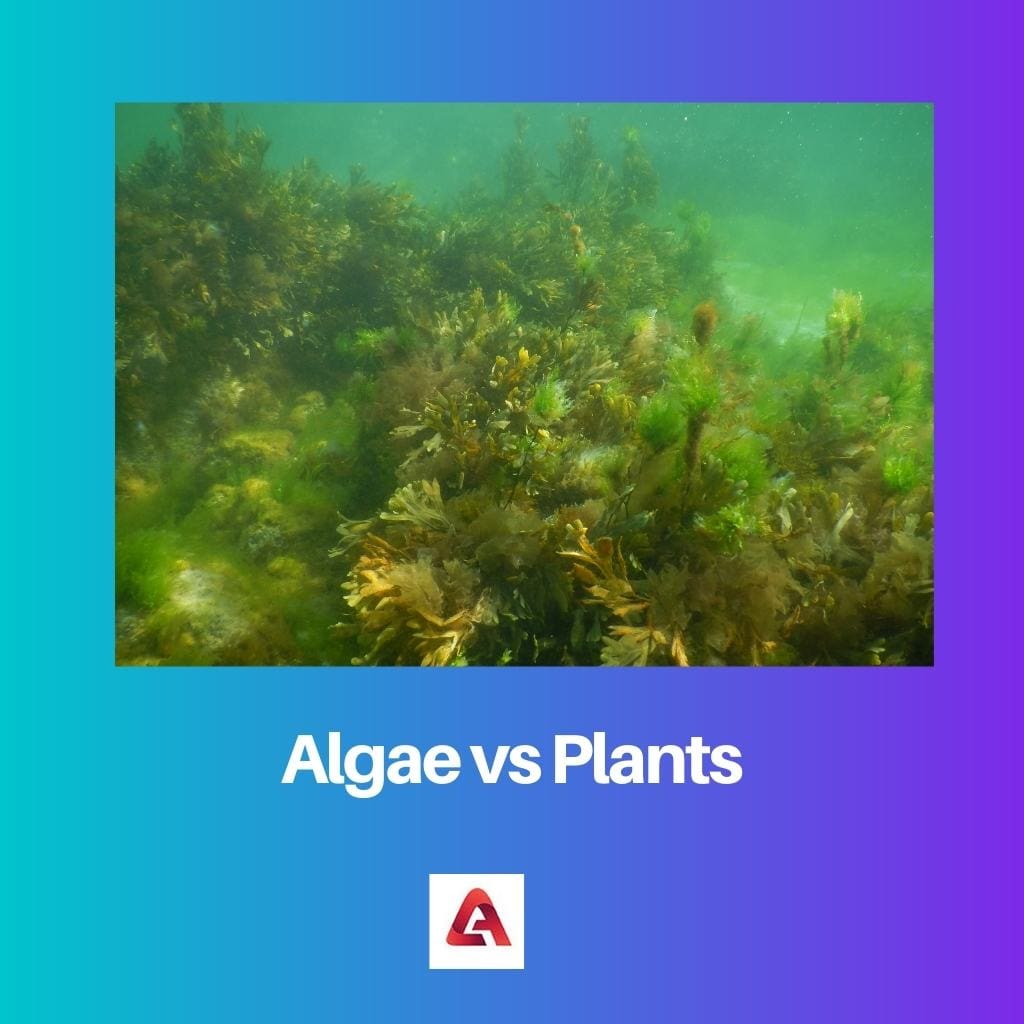
Hence, sometimes they must be examined under the microscope to be visible to the human eye. Plants have several diverse body parts like roots, shoots, flowers, etc. and thus cannot be unicellular.
Comparison Table
| Feature | Algae | Plants |
|---|---|---|
| Kingdom | Protista (mostly) | Plantae |
| Cellularity | Can be unicellular (single-celled) or multicellular | Primarily multicellular, few unicellular exceptions |
| Habitat | Primarily aquatic, some terrestrial and damp environments | Primarily terrestrial, some aquatic adaptations |
| Structure | Simpler structure, lacking specialized tissues and organs | Complex structure with specialized tissues (roots, stems, leaves) and organs |
| Reproduction | Asexual and sexual reproduction methods | Primarily sexual reproduction, some asexual methods |
| Mobility | Some unicellular species are motile (can move) | Immobile (rooted in place) |
| Pigments | Primarily chlorophyll a and b, with additional pigments like carotenoids | Primarily chlorophyll a and b, occasionally with other pigments |
| Food Acquisition | Autotrophic (photosynthesis) | Autotrophic (photosynthesis) or heterotrophic (absorb nutrients) |
| Vascular System | Absent (no specialized transport system) | Present in most plants (transports water and nutrients) |
| Examples | Chlorella, kelp, seaweed | Moss, ferns, trees, flowers |
What are Algae?
Algae are a diverse group of photosynthetic organisms that can be found in various habitats, ranging from freshwater and marine environments to soil and even within the bodies of other organisms. They encompass a wide range of forms, from unicellular microalgae to large multicellular seaweeds.
Characteristics of Algae
- Photosynthesis: Algae, like plants, utilize photosynthesis to convert sunlight into chemical energy. They contain chlorophyll and other pigments that capture light energy and convert it into sugars, releasing oxygen as a byproduct.
- Cellular Structure: Algae exhibit diverse cellular structures. Some are unicellular, such as Chlorella and diatoms, while others form colonies or multicellular structures. Unlike higher plants, algae lack true roots, stems, and leaves, but they may possess specialized structures for attachment or buoyancy.
- Habitats and Adaptations: Algae are highly adaptable and can thrive in a wide range of environments. They are commonly found in aquatic habitats, including freshwater bodies such as lakes and rivers, as well as marine environments like oceans and coral reefs. Some algae have adapted to extreme conditions, such as hot springs or polar ice.
- Nutritional Role: Algae play a crucial role as primary producers in aquatic ecosystems, forming the base of the food chain. They provide food and oxygen for a variety of aquatic organisms, including fish, invertebrates, and other algae-eating organisms.
Diversity of Algae
- Green Algae (Chlorophyta): These algae are found in freshwater environments but can also occur in marine and terrestrial habitats. They include unicellular species like Chlamydomonas as well as multicellular forms like Ulva (sea lettuce).
- Red Algae (Rhodophyta): Red algae are primarily marine and are found in deeper waters. They include species like Porphyra (nori) and Corallina (coralline algae) and are known for their red pigments, which allow them to photosynthesize at greater depths.
- Brown Algae (Phaeophyta): Brown algae are predominantly marine and include large, multicellular species such as kelp and Sargassum. They are characterized by their brown pigments and complex structures, forming underwater forests in coastal regions.
- Diatoms (Bacillariophyta): Diatoms are a major group of microalgae with intricate silica cell walls. They are abundant in both freshwater and marine environments and play a significant role in global carbon cycling and oxygen production.
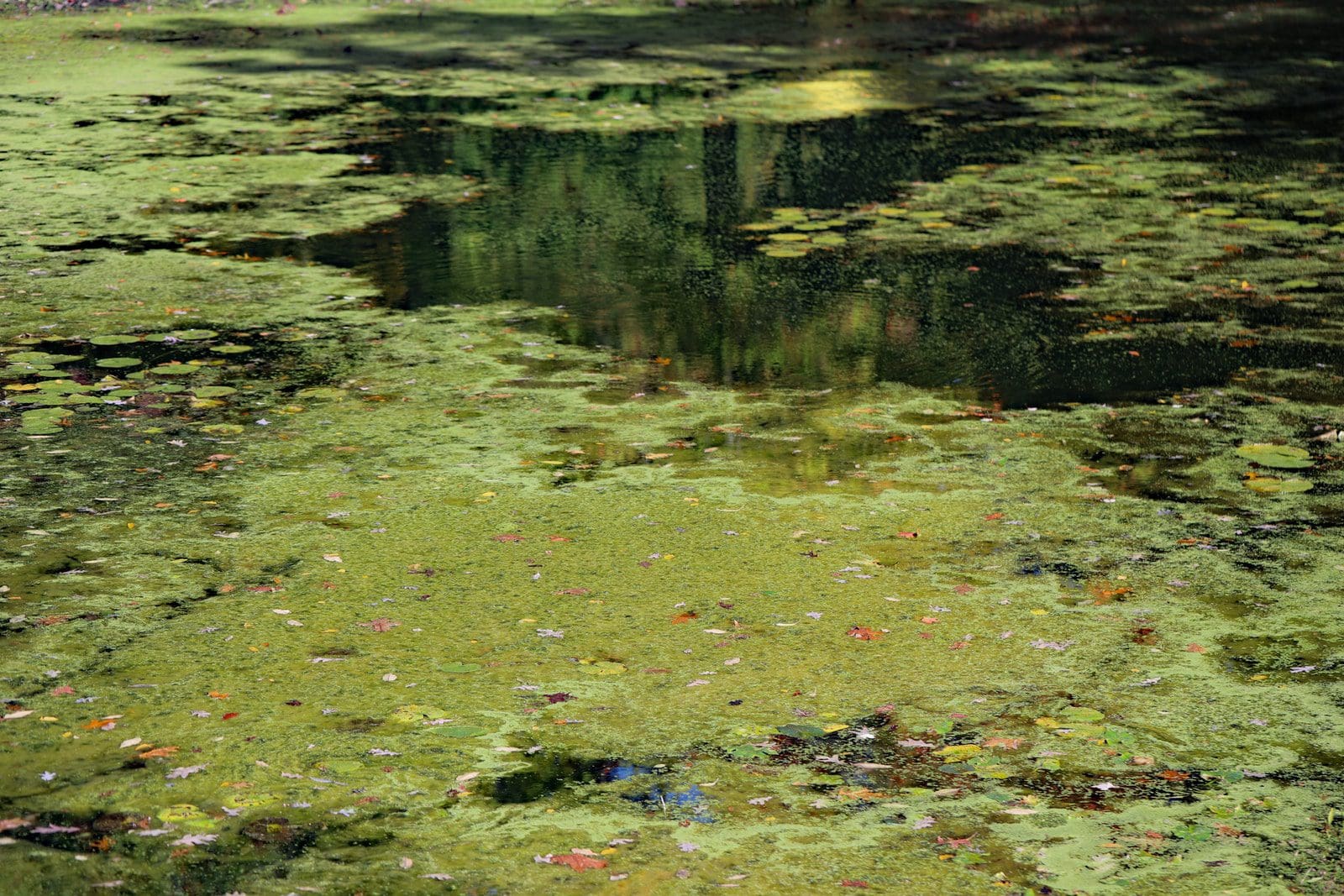
What are Plants?
Plants are multicellular, photosynthetic eukaryotic organisms belonging to the kingdom Plantae. They are characterized by their ability to produce their own food through photosynthesis, using sunlight, water, and carbon dioxide. Plants exhibit remarkable diversity in terms of size, shape, habitat, and reproductive strategies.
Characteristics of Plants
- Cellular Structure: Plants have complex multicellular structures with specialized tissues and organs, including roots, stems, leaves, and reproductive structures like flowers. These tissues allow for functions such as nutrient uptake, support, transport, and reproduction.
- Photosynthesis: Like algae, plants utilize photosynthesis to convert light energy into chemical energy in the form of glucose. Chlorophyll, along with other pigments, captures sunlight, enabling plants to synthesize their own organic compounds while releasing oxygen as a byproduct.
- Habitats and Adaptations: Plants have adapted to diverse terrestrial environments, including forests, grasslands, deserts, and wetlands. They have evolved various adaptations to cope with environmental challenges such as drought, extreme temperatures, and nutrient availability. These adaptations include structural features like waxy cuticles, stomata for gas exchange, and specialized root systems.
- Reproduction and Life Cycle: Plants exhibit a variety of reproductive strategies, including both sexual and asexual reproduction. Sexual reproduction involves the production of seeds through the fusion of male and female gametes, while asexual reproduction can occur through methods such as vegetative propagation or the production of spores. The plant life cycle alternates between a haploid gametophyte stage and a diploid sporophyte stage, although the specific details vary among different plant groups.
Diversity of Plants
- Angiosperms: Angiosperms are the most diverse group of plants and include flowering plants. They produce seeds enclosed within fruits and have specialized reproductive structures called flowers. Angiosperms dominate many terrestrial ecosystems and play essential roles in food production, ecosystem stability, and biodiversity.
- Gymnosperms: Gymnosperms are seed-producing plants that do not produce flowers or fruits. Instead, their seeds are exposed on the surface of cone scales. Conifers, cycads, ginkgos, and gnetophytes are examples of gymnosperms, and they are found in temperate and boreal forests.
- Ferns and Fern Allies: Ferns are non-flowering vascular plants that reproduce via spores. They have well-developed roots, stems, and leaves and are commonly found in moist environments such as forests and wetlands. Fern allies, including horsetails and club mosses, are also part of this group.
- Bryophytes: Bryophytes are non-vascular plants that lack specialized tissues for conducting water and nutrients. Mosses, liverworts, and hornworts are examples of bryophytes, found in damp habitats and playing important roles in soil formation and nutrient cycling.
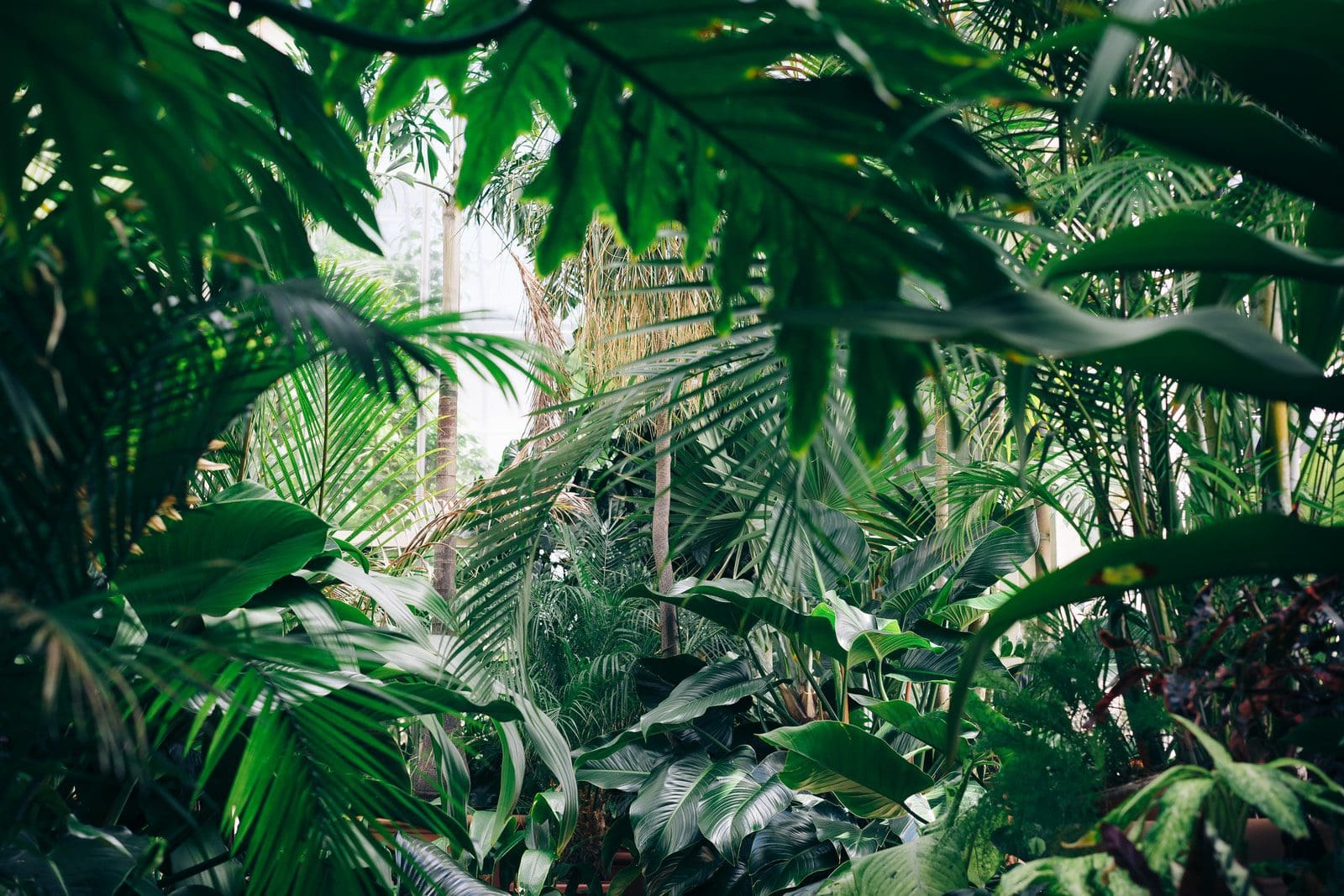
Main Differences Between Algae and Plants
- Cellular Complexity:
- Algae are primarily simple, unicellular or multicellular organisms without specialized tissues like roots, stems, and leaves.
- Plants are multicellular organisms with complex tissues and distinct structures such as roots, stems, and leaves.
- Habitat:
- Algae are predominantly aquatic, though they can also inhabit terrestrial and symbiotic environments.
- Plants are primarily terrestrial, though some species can adapt to aquatic or semi-aquatic habitats.
- Reproductive Structures:
- Algae reproduce through various methods including fragmentation, spore formation, and sexual reproduction, without the need for specialized reproductive structures.
- Plants reproduce sexually, with well-defined reproductive structures such as flowers, cones, or specialized organs for seed production.
- Photosynthetic Pigments:
- Algae possess a diverse range of photosynthetic pigments, including chlorophyll, but may also contain additional pigments such as phycobilins.
- Plants primarily use chlorophyll for photosynthesis, though they may contain other pigments for specialized functions like accessory pigments.
- Ecological Roles:
- Algae play crucial roles as primary producers in aquatic ecosystems, contributing significantly to oxygen production and serving as food sources for various organisms.
- Plants are integral components of terrestrial ecosystems, providing oxygen, food, habitat, and numerous ecosystem services essential for life on Earth.
